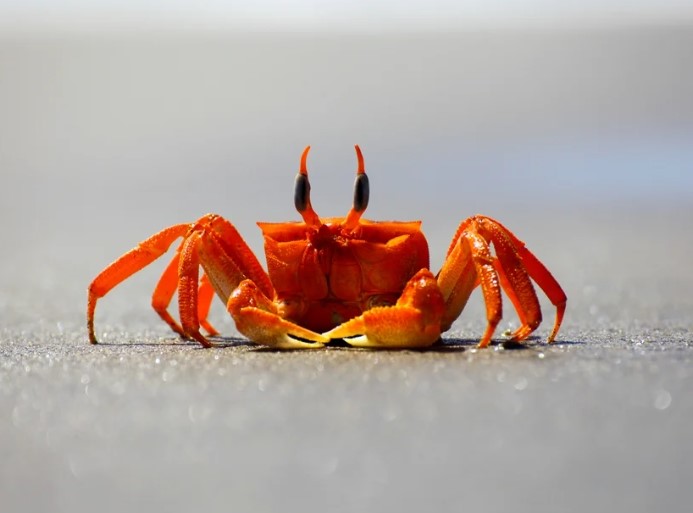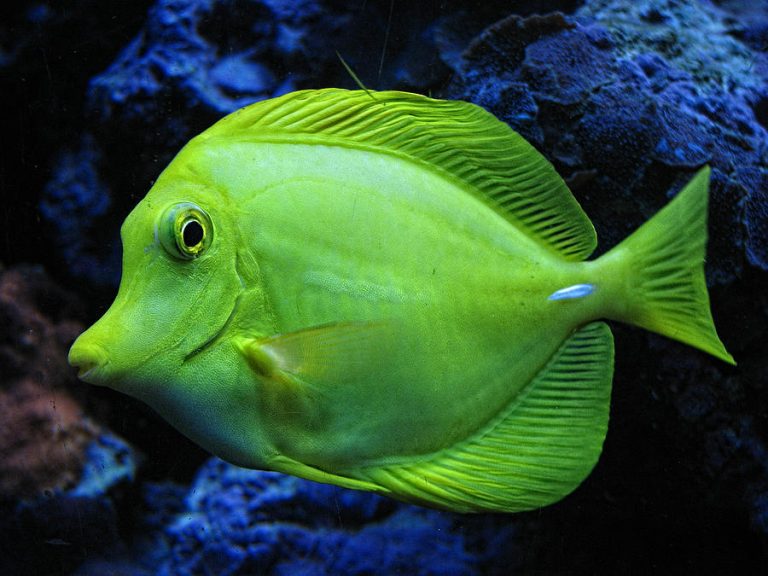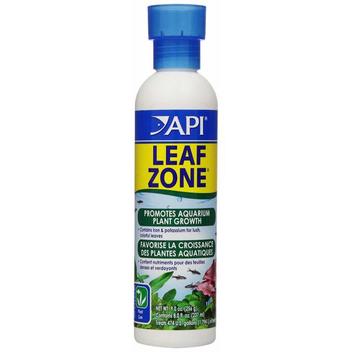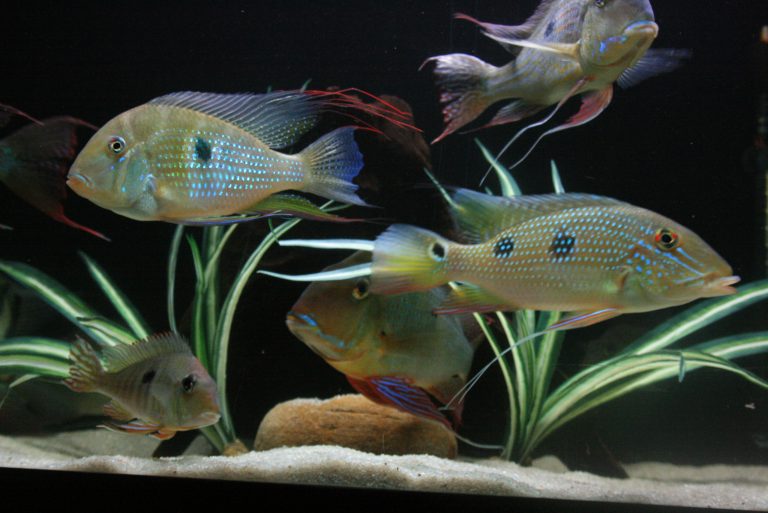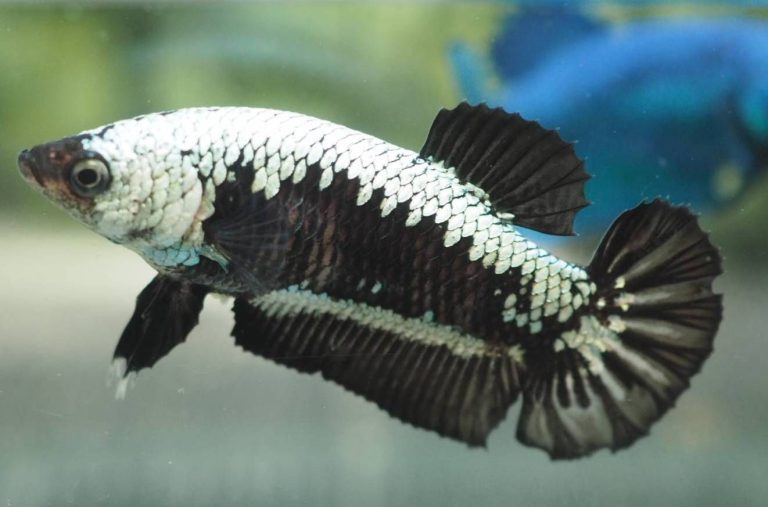What Do Crabs Eat: A Comprehensive Guide to their Diet
Crabs eat algae, plankton, worms, mollusks, and other small marine animals. These omnivorous creatures are a common food source for many marine predators, and their diet can vary depending on their environment and availability of food.
Crabs are fascinating creatures that inhabit virtually every ocean and freshwater ecosystem in the world. Their tough exoskeletons and pincers make them stand out from other marine animals. But have you ever wondered what these ocean dwellers eat? Crabs are opportunistic feeders and can eat anything from worms to small fish, depending on their size and species.
In this article, we will explore the diet of crabs, their feeding habits, and how they capture their prey. So if you’re curious about what crabs eat, keep reading!

Credit: globalseafoods.com
Different Types Of Crabs And Their Diets
Overview Of Different Species Of Crabs And Their Natural Habitats
Crabs have a diverse range of habitats, from saltwater oceans to freshwater streams, and even land. Here are some of the most common types of crabs and their habitats:
- Blue crabs: Found primarily along the atlantic coast of the united states, in estuaries and salt marshes.
- Snow crabs: Live in the icy waters of the north pacific and the bering sea.
- Hermit crabs: These crabs have no backbones and live in discarded shells. They can be found in saltwater and freshwater habitats all around the world.
- Coconut crabs: These are the largest land-dwelling crabs in the world. They are found on islands in the pacific and indian oceans.
Discussion Of The Differences In Their Diets Based On Habitat And Location
The diet of crabs can vary depending on their habitat and location. Here are some of the main differences:
- Marine crabs: These crabs typically eat algae, plankton, and small fish when they are in their larval stage. As they grow, they may switch to different prey, such as oysters or clams.
- Freshwater crabs: These crabs usually feed on insects, worms, and small fish.
- Land crabs: They have a much more varied diet, ranging from fruit and seeds to small animals such as insects and other arthropods.
Examples Of Specific Crabs And Their Diets
Here are some examples of specific crabs and their diets:
- Blue crabs: Their diet consists of clams, mussels, and other small animals.
- Snow crabs: They feed on clams, snails, and small fish.
- Hermit crabs: They typically eat algae and seaweed. Some species will also eat carrion and dead animals.
- Coconut crabs: Their diet includes fruits, nuts, and smaller animals such as insects and crabs.
Crabs have diverse habitats and diets, depending on various factors such as the location and habitat of the crab. Understanding a crab’s preferred diet is essential for their survival, as it can determine whether or not they get enough food to live healthily.
Types Of Foods Crabs Can Eat
Explanation Of The Various Types Of Foods That Crabs Can Consume
Crabs are omnivorous creatures, which means they eat both plants and animals. They feed on various food sources that fall under different categories such as:
- Algae and seaweed: Crabs consume algae and seaweed to get their daily dose of nutrients. They are also known to feast on decomposing matter.
- Insects and small animals: Crabs love to munch on insects and other small animals that fall their way, such as small fish, worms, snails, and crabs, as they are incredibly opportunistic eaters.
- Small mollusks: Crabs like to eat small mollusks such as clams, snails, and mussels. They can crack open the shells with their powerful claws and extract the meat.
- Aquatic plants: Crabs can eat aquatic plants such as eelgrass, as it provides them with the necessary nutrients.
- Pellets: Crabs are also known to consume commercial pellets that are specially formulated for their diet.
Discussion Of How The Diet Of A Crab Changes Throughout Their Life Cycle
The diet of a crab changes throughout its life cycle. As a larva, crabs feed on plankton, small plants, and animals. After they transform into juveniles, they feed on algae, small animals, and mollusks. As they become adults, their diet shifts towards other animals such as small fish, worms, and other crabs.
Examples Of Different Types Of Food Sources And How They Help Crabs Thrive
Different types of food sources offer different nutritional benefits to crabs. Here are some examples of how different foods help crabs:
- Algae and seaweed: Algae and seaweed are an excellent source of vitamins c and e, which help in preventing diseases and promoting shell growth in crabs.
- Insects and small animals: The protein and calcium found in insects and small animals promote muscle strength and the development of hard exoskeletons in crabs.
- Small mollusks: Small mollusks are a great source of calcium and proteins for crabs, which help in strengthening their exoskeleton and promoting muscle growth.
- Aquatic plants: Aquatic plants are rich in fiber and minerals, which help in promoting digestion and maintaining good health in crabs.
- Pellets: Commercial pellets provide a balanced diet of nutrients that crabs require for healthy growth and development.
The diet of crabs consists of various food sources that change according to their life cycle. Different foods offer different nutritional benefits, which help crabs thrive and maintain good health. As omnivorous creatures, crabs rely on a diverse diet to meet their dietary requirements.
The Benefits Of A Well-Balanced Diet For Crabs
Crabs are fascinating creatures that can be found in various marine environments. These crustaceans come in a wide range of shapes and sizes and are an important part of the ocean’s ecosystem. Like any other living creature, crabs need to consume the right food to stay healthy and thrive.
In this section, we will discuss the benefits of a well-balanced diet for crabs and how it can impact their growth, behavior, and survival rates.
Discussion Of The Benefits Of A Well-Balanced Diet For Crabs
A well-balanced diet for crabs is crucial for their overall health and well-being. Here are a few benefits of such a diet:
- Improves their immune system: Crabs that consume a well-balanced diet have a stronger immune system that helps them fight off diseases and infections.
- Enhances their shell: A well-balanced diet that is high in calcium allows crabs to build stronger shells, protecting them from predators and other external threats.
- Supports their metabolic processes: Crabs that consume a variety of foods receive the necessary nutrients required for their metabolic processes, allowing them to function correctly.
Explanation Of How The Diet Impacts Their Growth, Behavior, And Survival Rates
A well-balanced diet impacts a crab’s growth, behavior, and survival rates in several ways.
- Growth: Crabs that consume a well-balanced diet can grow and develop at a healthy rate. Consuming nutrient-rich foods can aid in moulting, a process where a crab sheds its shell to grow and regenerate.
- Behavior: A well-balanced diet can significantly impact a crab’s behavior. For example, consuming a high-protein diet can increase aggression towards other crabs and improve hunting behavior.
- Survival: A diet lacking in essential nutrients can lead to malnourishment and even death. A well-balanced diet, on the other hand, can lead to increased survival rates.
Examples Of How A Well-Balanced Diet Can Improve A Crab’S Overall Health And Well-Being
A well-balanced diet can contribute to better health and well-being for crabs. Below are examples of how a well-balanced diet can improve a crab’s overall health:
- Variety: Providing crabs with a variety of food options can add diversity to their diet, leading to better overall health.
- Nutritional content: Including foods that are high in nutrients like calcium, protein, and vitamins can assist crabs in building stronger shells and boosting their immune system.
- Smaller portions: Offering smaller portions of food to crabs can prevent overeating and help maintain a healthy weight.
The benefits of a well-balanced diet for crabs cannot be overstated. Consuming a balanced diet can significantly impact a crab’s growth, behavior, and survival rates, and improve their overall health and well-being.
The Impact Of A Poor Diet On Crabs
Crabs are fascinating crustaceans that thrive in various habitats worldwide, from beaches to deep-sea trenches. As omnivores, crabs dine on a diverse range of foods, including algae, small fish, mollusks, and plants. Unfortunately, the consequences of a poor diet for crabs can be devastating, both environmentally and individually.
We’ll explore the impact of a poor diet on crabs, discussing the risks associated with it.
Overview Of The Risks Associated With A Poor Diet For Crabs
- Malnutrition: Just like humans, crabs require a balanced diet to ensure proper growth and development. A lack of essential nutrients can lead to stunted growth, weakened immune systems, and even death.
- Altered behavior: A poor diet can affect a crab’s natural instincts, making them less active or aggressive than their healthy counterparts. This could decrease the likelihood of suitable mating opportunities, reduce their ability to compete for food, and limit their survival chances.
- Ecosystem disruption: Crabs play a crucial role in marine ecosystems. A poor diet can alter their behavior, and this in turn could have a knock-on effect on other species, reducing biodiversity and impacting the marine food chain.
Discussion Of How A Poor Diet Can Affect A Crab’S Growth, Behavior, And Overall Health
- Growth: An insufficient diet can result in stunted growth, which is often irreversible. Furthermore, crabs with underdeveloped shells are more vulnerable to predators and other threats, further limiting their chances of survival.
- Behavior: Crabs that don’t consume sufficient nutrients may become more lethargic and inactive. They may have difficulty foraging for food, making them more vulnerable to the elements and predators, which could reduce their lifespan. For example, a lack of calcium can lead to a condition called ‘soft shell,’ which makes them more vulnerable to injuries.
- Health: A poor diet can compromise a crab’s immune system, making it more vulnerable to injury and disease. Crabs with weakened immune systems are more susceptible to illnesses, including bacterial and fungal infections. Poor nutrition coupled with prolonged periods of stress can lead to other health conditions as well.
Examples Of How A Poor Diet Can Lead To Diseases And Decreased Survival Rates
- Infections: The lack of adequate nutrients may compromise a crab’s immune system, which can make them more prone to infection. Fungal infections in particular can be devastating for crabs, often resulting in death.
- Parasites: Parasites such as worms and flukes thrive in malnourished crabs, which can cause significant damage to a crab’s internal organs.
- Reduced survival rates: Crabs with poor diets may face difficulties during mating, attracting mates, and growing. Furthermore, lack of food can cause crabs to avoid predators, and weaken their overall health, contributing to decreased survival rates.
A poor diet can have disastrous consequences on the growth, behavior, and overall health of crabs. As the marine ecosystem’s health depends heavily on the health of individual species like crabs, it is crucial to ensure that they receive a balanced and nutritious diet.
Frequently Asked Questions For What Do Crabs Eat
What Is A Crab’S Diet?
Crab’s diets consist of plankton, algae, mollusks, and other small crustaceans.
Do Crabs Need To Be Fed In Captivity?
Feeding crabs is important in captivity to maintain their health. A varied diet is recommended.
Can Crabs Eat Vegetables And Fruits?
Yes, crabs can eat vegetables like lettuce, carrots, and fruits like banana, apples, and berries.
How Often Should I Feed My Pet Crab?
It is recommended to feed your pet crab small amounts twice a day, or larger amounts once a day.
Conclusion
Overall, understanding what crabs eat requires research and attention to detail. While there are specific species of crabs that prefer certain types of food, such as omnivorous blue crabs and herbivorous sally lightfoot crabs, most crabs will consume a range of foods depending on their environment and availability.
As scavengers, crabs play an important role in coastal ecosystems by recycling nutrients and consuming dead and decaying materials. However, it’s important to consider the impact of human activities, such as pollution and overfishing, on crab populations and their food sources.
By understanding the delicacy of these ecosystems and taking steps to protect them, we can ensure that crabs continue to thrive and contribute to the health of our planet’s wetlands and shorelines.
